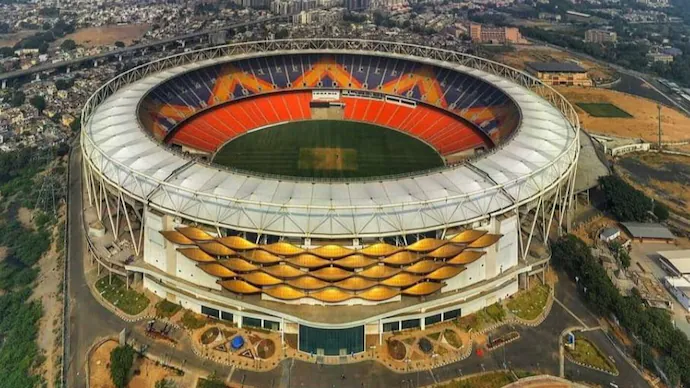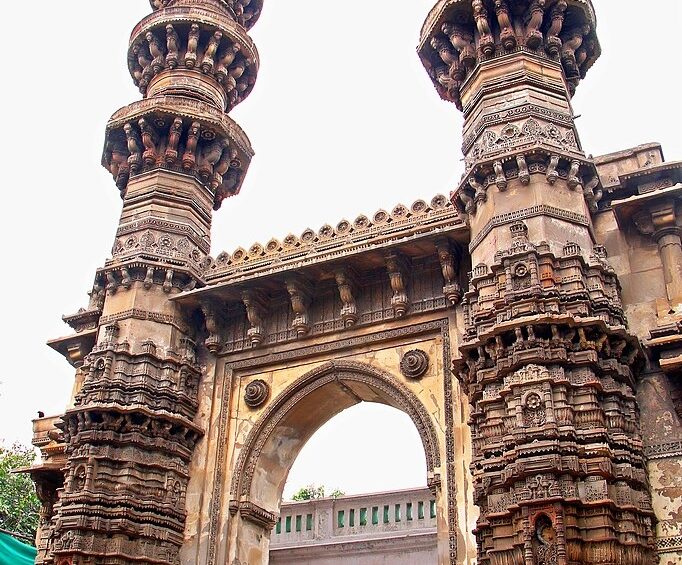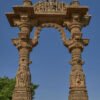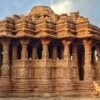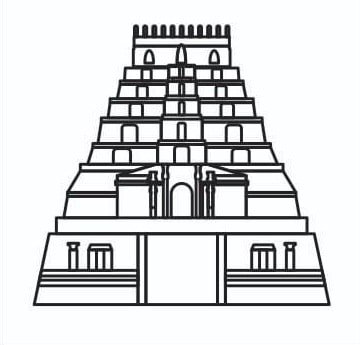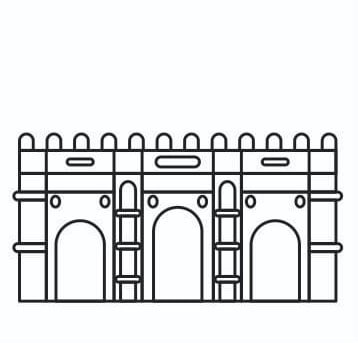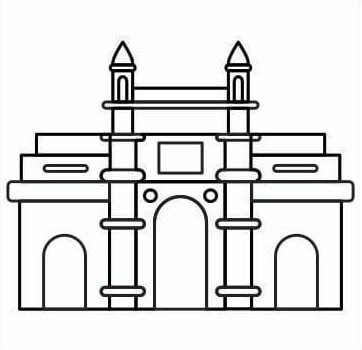Monument –Narendra Modi Stadium, Ahmedabad
Built by – Larsen & Toubro
Built in –1982
“Narendra Modi Stadium is one of the Premier cricket stadiums of India, located in Motera, Ahmedabad.
Built on the banks of the Sabarmati River on the outskirts of Ahmedabad, the stadium was established in 1982. It was renovated ahead of the Champions Trophy in 2006 when three new pitches and a new outfield were laid, and state-of-the-art floodlights and covered stands were added. The venue hosted its first Test in November 1983 and has witnessed some memorable Indian feats.
Sunil Gavaskar got to his 10,000 Test runs here, against Pakistan in 1986-87, and seven years later, Kapil Dev nailed his 432nd victim to go past Richard Hadlee as Test cricket’s leading wicket-taker.
In October 2015, the Gujarat Cricket Association, under the visionary leadership of the then GCA President and current Prime Minister, Shri Narendra Modi, decided to reconstruct the stadium and make it the largest Cricket Stadium in the world.
In February 2020, the redevelopment task was completed, and it is now capable of accommodating more than 1.3 lakh cricket fans. The new Narendra Modi Stadium broke the record by surpassing Melbourne Cricket Ground which can accommodate 90,000 spectators.
As a part of the reconstruction, the Narendra Modi Stadium will now be used not only for major local and international cricket matches but also for community use. A community indoor cricket academy will be housed under the podium with a dormitory for up to 40 athletes, allowing students from across India and the globe to attend. The academy also has access to six indoor practice pitches and three outdoor practice fields.
The stadium is now one of the world’s greatest cricket stadiums putting the Gujarat Cricket Association on the global sporting map as an iconic sports venue for aspiring and elite players.”
Photo Courtesy – www.indiatoday.in
